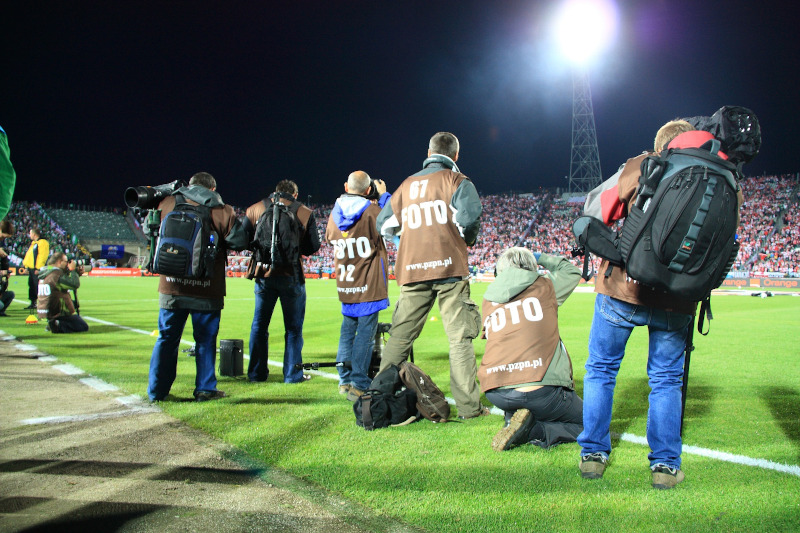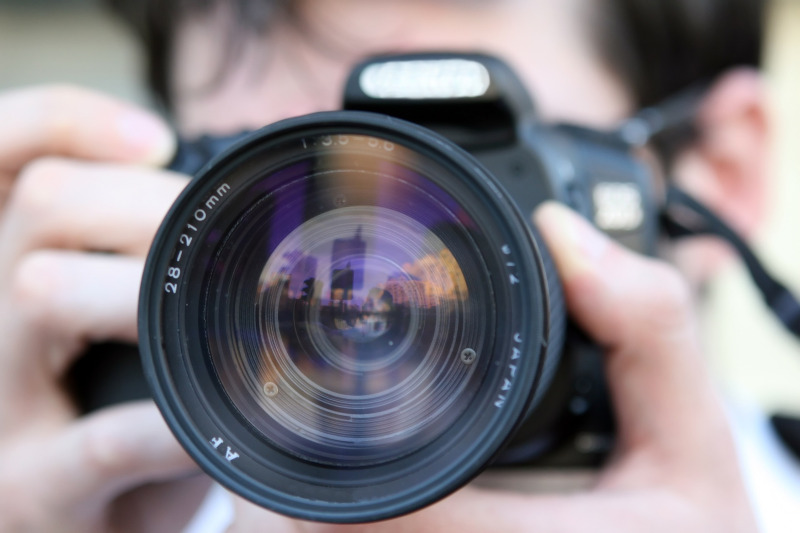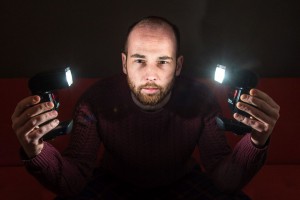Is the democratisation of photography a good thing? Ben Davis is yet to be convinced…
The future of professional photography? Image via Unsplash
The advent of the smartphone has empowered us. In everyone’s pocket is a device that can instantly access the total sum of human knowledge, stream live news to the palm of your hand, and allow you to participate in the spread of information through text and pictures. They’ve allowed us to become citizen journalists.
The evidence is clear. At any celebrity sighting, public performance or human tragedy, scores of bystanders will draw their phones and begin recording. Often that footage will filter through social media platforms and, if there’s enough human interest, it will spread virally or be republished by news desks. This instinct to record is a strange recent phenomenon, one no doubt studied by anthropologists, and it emboldens the rubbernecker instinct.
It’s also changed the face of the news, and the type of journalism on offer to us as readers. Lots of online articles these days will begin with some crudely captured phone image or footage, and then be padded out with Twitter responses from the public with barely any proper editorial insight. This is often because it’s quick, cheap and easy to produce, and many news organisations have been struggling with resources for the past decade or so.
The new era
At first, news editors were excited by what they termed “reader-generated content”. It allowed them to access far more material than ever before, and if their staff photographer wasn’t at an event it didn’t matter, as there’d be other people there capturing photos that they could publish. Often for free.
At the same time as the public were becoming citizen journalists, media outlets were looking to make spending cuts. Newspapers were facing tumbling revenues. The reasons were complex; the financial crash and global recession meant resources were under pressure, and the surge of the internet into our lives resulted in print circulations falling and online ad revenue no longer being as bountiful.
Company bosses decided that staff photographers were an expense they could no longer afford, and at the majority of local and regional newspapers, most were made redundant. In 2012 I was one of them, having worked for 6 years as a staff photographer on a city newspaper.
After all, the readers were now capable of capturing and submitting images with ease and the gap could be plugged. Clearly photography wasn’t respected, valued or maybe understood by those taking the decisions, and anyone can take a picture, right?
Why "anyone" can't take a picture, actually
It’s true that we can all hold up a camera and press a button. Taking pictures is easy. Creating photographs that skillfully tell a story and engage the viewer is something different entirely. A strong image draws the reader into an article; often they will remember the photo for far longer than the words of the story. The quality of images in these publications has suffered drastically, making the product look terrible, and surely exacerbating dwindling circulation figures – somewhat of a Catch-22.
The photo needs to tell the story with all the key components working towards this narrative. This isn’t something that can be replicated by an untrained ‘citizen journalist’ snapping on a smartphone.
It would be totally unfair to expect the public to be able to produce the work of a skilled press photographer. Yet they were expected to do precisely this. It’s no different to providing them with a pen and notepad and ask them to write an engaging piece of editorial. It takes skill and training to create well-crafted work. So what makes an engaging press photograph?
It needs to have a well-considered composition and be captured from an engaging angle. Visually, it needs to work. In the same way that sentences have structure and grammar, photographs have elements that allow us to read them. The photo needs to tell the story with all the key components working towards this narrative.
This isn’t something that can be replicated by an untrained ‘citizen journalist’ snapping on a smartphone, and as such good photojournalism has disappeared from lots of publications.

Pro photographers working at an event
The future?
Of course, quality photojournalism still exists, and annual shortlists for best news photos of the year are populated by master photographers at the cutting edge of current events. I can’t recall a single “reader photo” in the runnings for any industry accolades.
But the path into top-level photojournalism is much trickier now. Many of the specialist photojournalists who do tremendous work on the world stage learned their craft at more local publications. With these local jobs no longer existing, it’s hard to imagine how future generations of photojournalists will have the opportunity to hone their skills and take the step up in the industry. This is concerning for anyone who values a strong press.
It’s not accurate to blame the decline of professional photojournalists on the rise of citizen journalists. It’s possible for the two to co-exist, and more people participating in journalism is good for democracy and healthy for society.

A professional tool, but for how long?
Instead, I’d argue that photojournalists are a casualty of the internet and the changing structure of the economy. Smartphones are a double-edged sword. They allow people to easily access content and contribute to stories as citizen journalists, but at the same time they’ve disrupted the established revenue model - contributing to the decline of photojournalism. It’s rare that you pay for content these days; it’s expected for free in digital formats, and news publishers have struggled to come up with an alternative that generates enough revenue from online readers. Until this changes, it’s difficult to see where tomorrows photojournalists will get the chance to learn their trade and carve out a valuable career in news.
About the Author

Ben Davis is an award-winning professional photographer with more than 10 years' experience in the industry. His internet home is www.cambridgeshireweddingphotography.com

